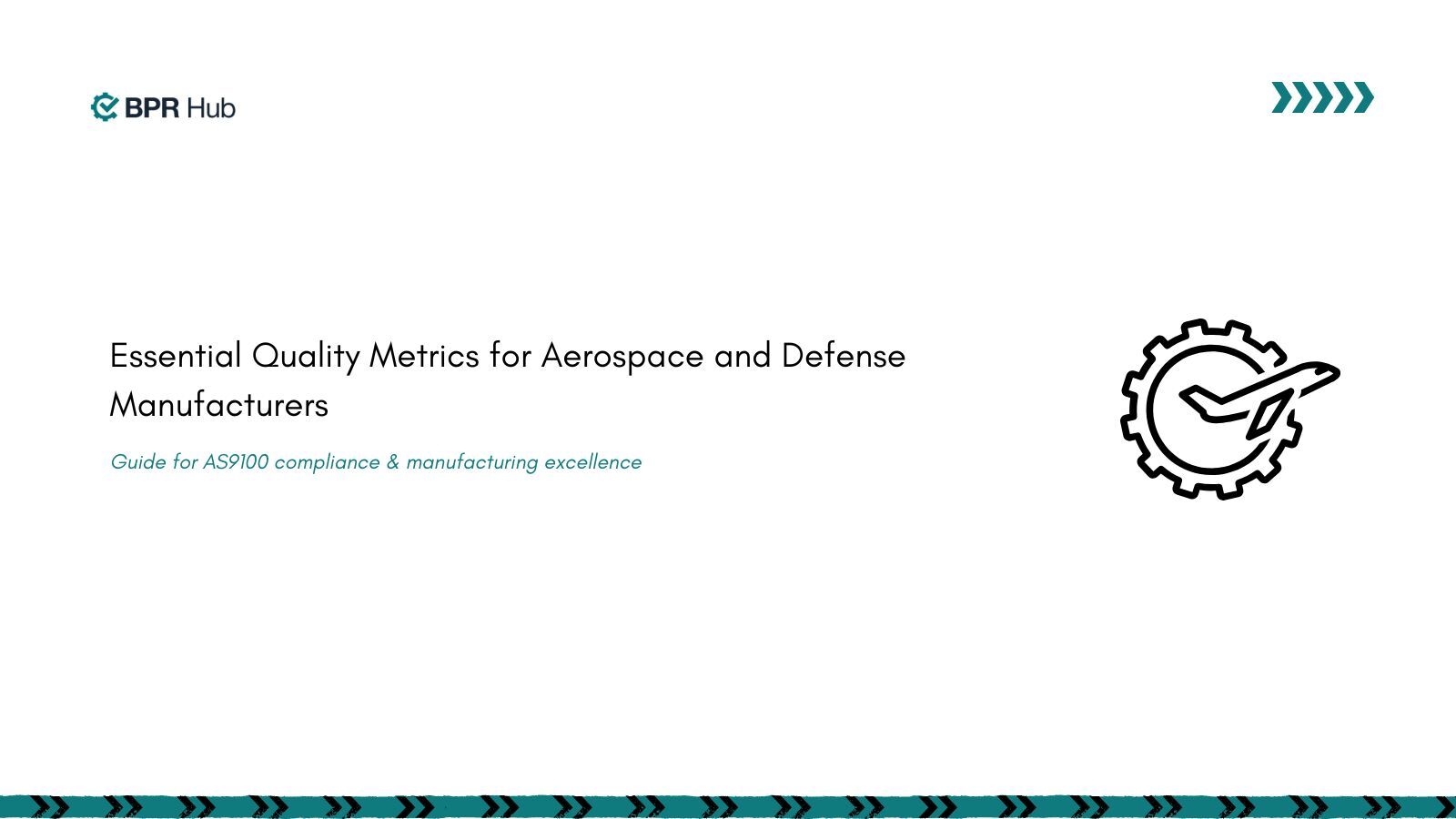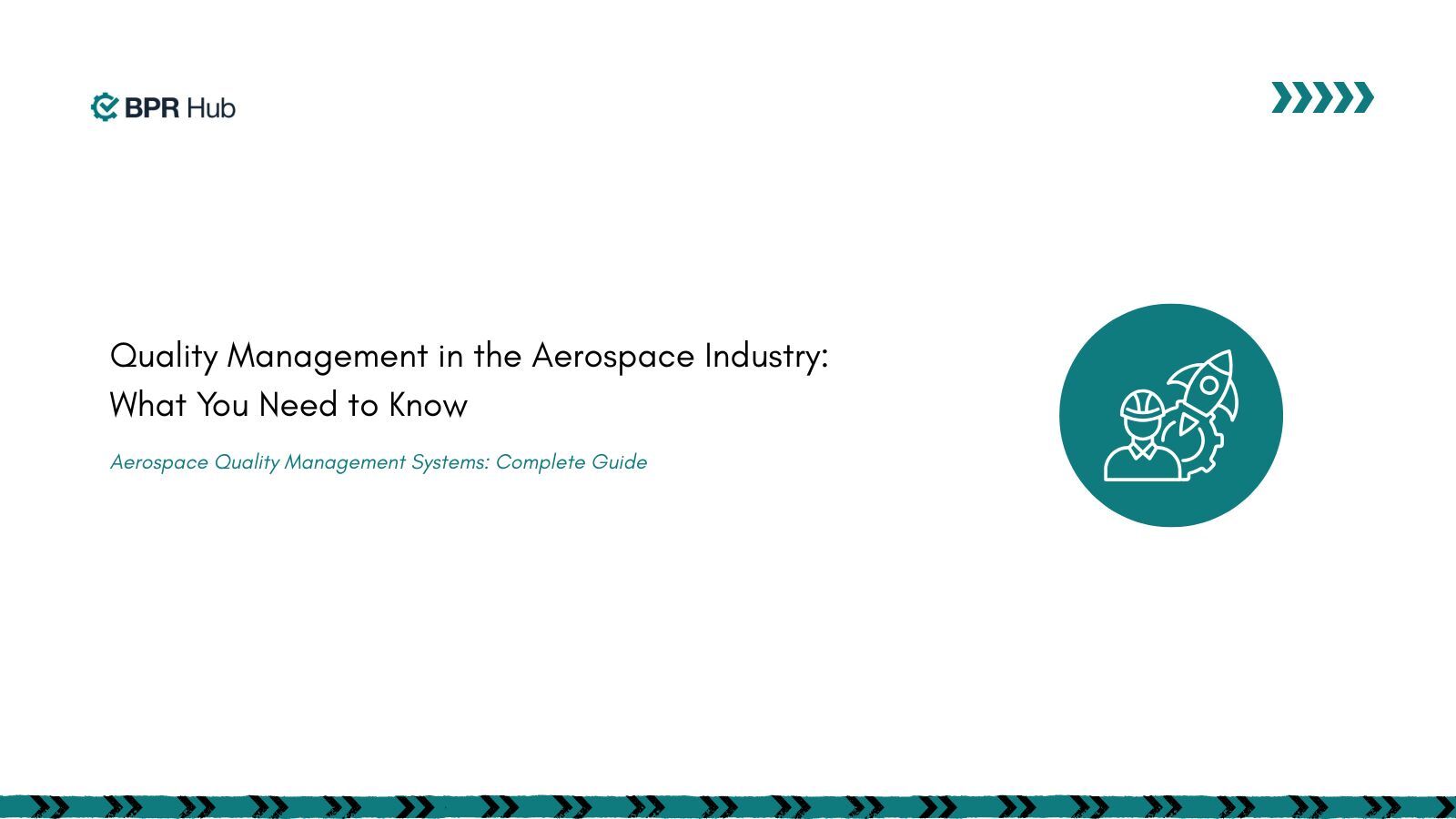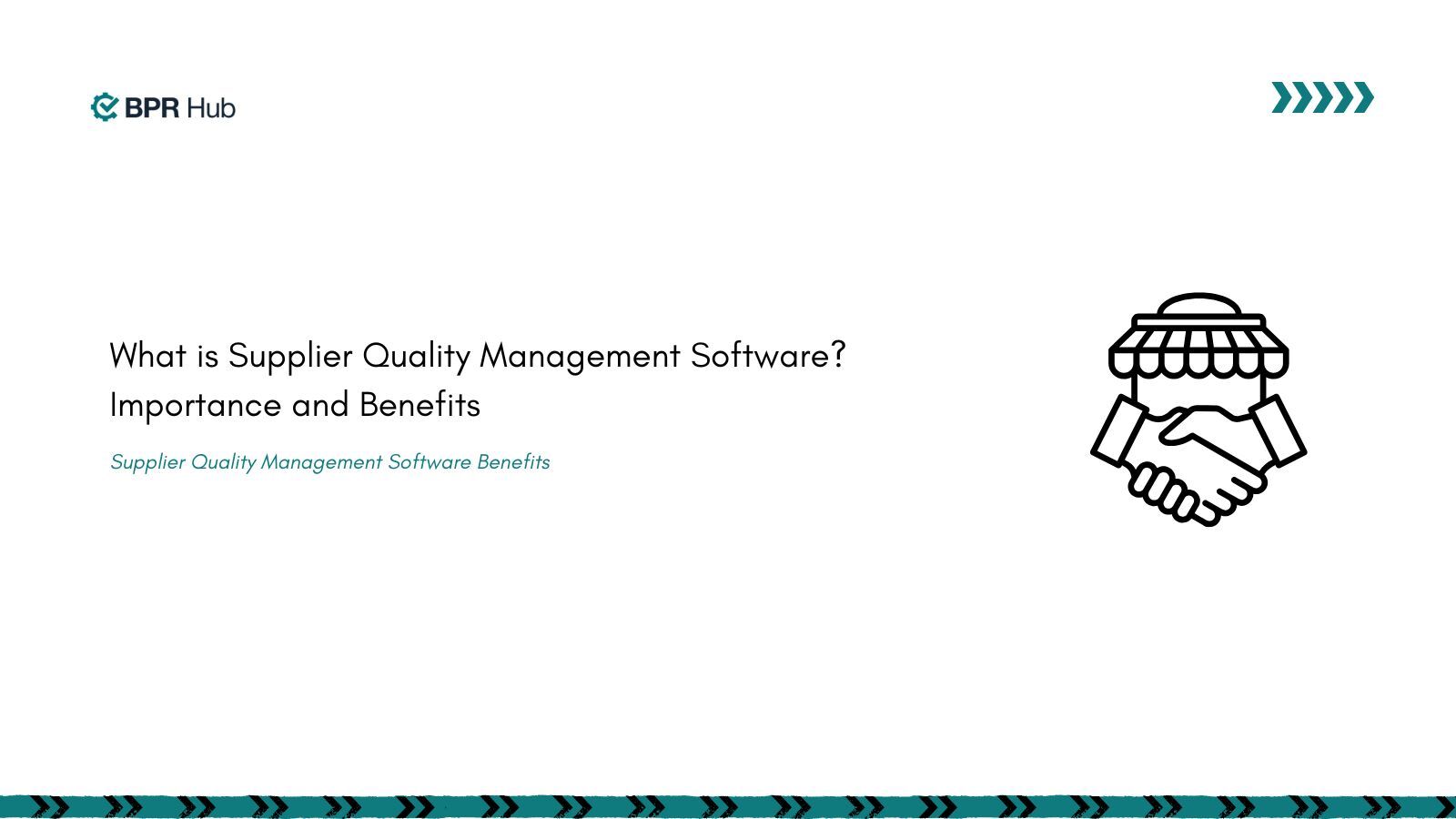The aerospace and defense industry operates under some of the most stringent quality requirements globally, where a single defect can lead to catastrophic consequences. With complex supply chains spanning multiple tiers of suppliers and rigid regulatory frameworks from organizations like the FAA, EASA, and DoD, manufacturers must implement robust aerospace quality metrics to ensure mission-critical systems perform flawlessly.
Modern aerospace manufacturing faces unprecedented challenges with demand surging while production continues to lag due to labor gaps and vulnerable supply chains. This makes effective quality management in aerospace & defense more crucial than ever for manufacturers seeking to deliver reliable products while maintaining competitive advantage through comprehensive quality systems.
What Is Aerospace Quality Management & Assurance?
Defining Aerospace Quality Management Systems (AQMS)
Aerospace Quality Management Systems represent comprehensive frameworks designed specifically for the aviation, space, and defense sectors. AS9100 is an international standard for aerospace management systems that provides for continual improvement, emphasizing defect prevention and the reduction of variation and waste in the aerospace industry supply chain and assembly process. These systems build upon ISO 9001 foundations while incorporating aerospace-specific requirements that address the unique challenges of this high-risk industry.
The cornerstone standard AS9100D encompasses quality management system requirements designed for use at all levels of the supply chain. The standard builds upon ISO 9001 by introducing additional requirements tailored specifically for the aerospace sector, enhancing focus on safety, reliability, and conformity throughout the entire supply chain. Key components include critical item management, foreign object debris (FOD) control, change management protocols, and comprehensive supply chain oversight.
Why Aerospace Quality Assurance Differs from Other Industries
Aerospace quality assurance operates under fundamentally different constraints compared to other manufacturing sectors. The industry faces zero tolerance for defects due to safety implications, extensive regulatory oversight from multiple agencies, and products with operational lifecycles spanning decades. In A&D manufacturing, quality control involves a series of steps and checks throughout the production process to identify and manage issues that could potentially compromise the integrity of the final product.
Unlike consumer goods manufacturing, where defects might result in customer dissatisfaction or returns, aerospace defects can lead to loss of life, mission failure, or national security implications. This reality drives the industry's emphasis on prevention over detection, comprehensive documentation requirements, and rigorous supplier qualification processes essential for AS9100 compliance.
Ready to elevate your AS9100 compliance and manufacturing excellence with BPRhub
📍 Book a Demo
📧 hello@bprhub.com
The Role of Continuous Improvement in Aerospace Quality Management Systems
Continuous improvement forms the backbone of effective aerospace quality management systems. One of the fundamental principles of the AS9100 standard is continuous improvement, allowing certified companies to implement iterative design practices and change their processes to become safer and more efficient through a cycle of evaluating performance, identifying opportunities for improvement, and implementing changes.
This systematic approach enables organizations to evolve beyond mere compliance toward operational excellence. Through regular audits, corrective and preventive actions (CAPA), and data-driven decision making, manufacturers can identify trends, eliminate root causes of quality issues, and optimize processes for enhanced performance.
Key Quality Metrics in the Aerospace Industry Quality Management System
First-Pass Yield (FPY) – Why It's Crucial for Aerospace Quality Management
First-Pass Yield measures the percentage of products manufactured correctly without requiring rework, repair, or scrap during the initial production attempt. FPY represents the success rate of individual process steps, providing critical insights into process stability and effectiveness. In aerospace manufacturing, high FPY rates are essential due to the complex, expensive nature of components and tight delivery schedules.
Leading manufacturers typically target FPY rates above 95%, with top-performing organizations achieving 98% or higher. However, in aerospace, FPY varies significantly by process type, such as machining, composites, special processes under NADCAP, or avionics assembly, and it is not uncommon for complex or highly specialized operations to have lower FPY due to technical difficulty and regulatory requirements. While aerospace-specific benchmarks vary by component criticality and company standards, these general manufacturing targets guides performance expectations. Low FPY indicates process instability, inadequate training, or insufficient process controls – all critical concerns in aerospace manufacturing where precision tolerances are measured in microns.
FPY should also be evaluated at both the station level and rolled level to align with AS9100 requirements for monitoring, measurement, and process performance (Section 9.1).
Rolled Throughput Yield (RTY) – Measuring End-to-End Process Quality
Rolled Throughput Yield (RTY) differs fundamentally from First-Pass Yield by measuring the probability that a unit will pass through ALL process steps without defects. RTY is calculated by multiplying the FPY of each individual process step, providing a more comprehensive view of overall process performance than individual step yields.
For aerospace manufacturers, RTY reveals the "hidden factory" of rework and repair that may not be visible when examining individual process steps. A manufacturing process with five steps, each achieving 95% FPY, would have an RTY of only 77.4% (0.95^5), demonstrating how small inefficiencies compound across complex manufacturing processes. This metric enables the identification of systemic quality issues and the prioritization of improvement efforts.
Because aerospace manufacturing often includes nonlinear routing (re-inspections, rework loops, and process splits), RTY is typically used within Lean/Six Sigma initiatives rather than as a primary QMS metric. RTY supports AS9100 continuous improvement requirements, but is usually a supplemental internal efficiency measure rather than a compliance KPI.
Defects per Million Opportunities (DPMO) – Tracking Precision Quality in Aerospace Manufacturing
Defects per Million Opportunities (DPMO) provides a standardized method for measuring quality performance across different processes and products. DPMO represents defects per 1 million opportunities, with the Six Sigma goal being 3.4 defects per 1 million opportunities. This metric proves particularly valuable in aerospace, where complex assemblies contain thousands of potential failure points.
For aerospace manufacturers, DPMO enables comparison of quality performance across different product lines, suppliers, and manufacturing facilities. Leading aerospace organizations strive for DPMO levels well below industry averages, with critical safety components often required to achieve even lower defect rates. However, aerospace QMSs more commonly track defects per unit (DPU), nonconformance rates, and escape rates, since DPMO may not reflect regulatory requirements for critical characteristics, key characteristics, or safety-significant features. This metric supports data-driven decision-making for process improvements and supplier evaluations.
Supplier Quality Index / Supplier Quality Rating – Managing Supplier Performance
Supplier Quality Rating systems provide comprehensive assessments of supplier performance across multiple dimensions, including quality, delivery, cost, and service. A high-quality rating from suppliers ensures that the final product meets stringent standards and reduces the risk of defects or failures in critical systems. In aerospace manufacturing, where the majority of product value typically comes from suppliers, effective supplier quality management becomes critical.
Leading aerospace manufacturers implement sophisticated supplier scorecards tracking metrics such as incoming inspection pass rates, on-time delivery performance, corrective action response times, and audit results. AS9100 Section 8.4 requires rigorous control of externally provided processes, products, and services; therefore, supplier performance data must support supplier approval, risk classification (Tier 1/Tier 2), and ongoing surveillance. Supplier escape rates and First Article Inspection (FAI) acceptance rates are additional aerospace-specific KPIs that complement the Supplier Quality Index. These systems enable proactive supplier development and risk mitigation strategies essential for managing external providers.
Scrap & Rework Rate – Cost, Compliance and Risk Implications
Scrap and rework rates directly impact profitability, delivery performance, and regulatory compliance in aerospace manufacturing. Minimizing scrap is crucial for reducing waste and controlling costs, with low scrap rates signifying effective quality control and efficient use of resources. Given the high value of aerospace materials and components, even small improvements in scrap rates can generate significant cost savings.
Beyond financial implications, excessive scrap and rework can indicate systemic quality issues that might compromise product safety and reliability. Most established manufacturing operations aim for scrap rates under 5%, with top-performing plants achieving below 2%. In aerospace, acceptable scrap levels may differ significantly depending on the manufacturing technology; precision machining often targets <1%, while composite layup or advanced materials may yield higher natural variation. Benchmarks must therefore be contextualized by component criticality, special process classification, and material sensitivity. Effective tracking requires categorization by root cause to enable targeted improvement initiatives.
Audit Findings & CAPA Effectiveness – System Health Indicators
Audit findings and CAPA effectiveness provide critical insights into the health and maturity of aerospace quality management systems. Aerospace QMS facilitates the management of corrective and preventive actions (CAPA) to address non-conformities, deviations, and opportunities for improvement, ensuring that root causes of quality issues are addressed systematically.
Key metrics include the number and severity of audit findings, average time to close CAPAs, and repeat finding rates. AS9100 audits categorize findings as Majors, Minors, or Opportunities for Improvement (OFIs), and many aerospace OEMs set contractual expectations for containment within 24–48 hours and full root-cause resolution using 8D or 5-Why methodologies within 30–60 days. Leading organizations track CAPA effectiveness by measuring recurrence rates, containment timeliness, and the percentage of CAPAs addressing true root causes versus symptoms, ensuring long-term system stability. Effective organizations track leading indicators such as the percentage of CAPAs addressing root causes versus symptoms, and the implementation of preventive actions before issues occur.
Aligning Metrics with Aerospace Quality Management Systems (AQMS)
Integrating Metrics into Daily Operations
Effective aerospace quality management systems require seamless integration of quality metrics into daily operations through automated data collection, real-time dashboards, and exception-based reporting. Modern AQMS platforms leverage Manufacturing Execution Systems (MES), Enterprise Resource Planning (ERP), and Quality Management Software (QMS) to create integrated data flows enabling automatic metric calculation, trend analysis, and proactive alerting.
Calibration to AS9100 Standards
Quality metrics must align with AS9100 requirements and broader supply chain objectives to drive meaningful improvements. AS9100 takes the ISO 9001 requirements and supplements them with additional quality system requirements established by the aerospace industry to satisfy DOD, NASA, and FAA quality requirements. This alignment ensures metrics support regulatory compliance while providing actionable insights for continuous improvement.
Linking Metrics to Continuous Improvement
The true value of aerospace quality metrics emerges through their connection to systematic improvement processes. By collecting and analyzing quality data in real-time, QMS enables manufacturers to identify trends, detect anomalies, and proactively address potential issues before they escalate. This closed-loop approach ensures metrics drive actual improvements rather than simply providing historical reporting.
Best Practices for Quality Assurance in Aerospace and Defense
Leadership Commitment & Culture of Quality
Successful aerospace quality assurance begins with unwavering leadership commitment and a pervasive culture of quality throughout the organization. Leaders must demonstrate visible commitment through resource allocation, personal involvement in quality reviews, and recognition of quality achievements that cascades throughout the organization.
Supplier Collaboration and Risk-Based Thinking
Aerospace quality management requires collaborative relationships with suppliers based on mutual understanding of quality requirements and shared commitment to continuous improvement. Risk-based thinking drives supplier selection, qualification, and ongoing management decisions while organizations assess supplier capability, financial stability, and quality history.
Leveraging Digital Technologies
Modern aerospace quality management systems leverage digital technologies to enhance visibility, accuracy, and responsiveness. IoT devices can monitor equipment and processes in real time, providing valuable data on performance and identifying potential issues before they lead to failures. Advanced analytics, artificial intelligence, and machine learning capabilities enable predictive quality management and intelligent process optimization.
Continuous Improvement Through DMAIC
The DMAIC (Define-Measure-Analyze-Improve-Control) methodology provides a structured approach to continuous improvement in aerospace manufacturing. This systematic approach ensures improvement initiatives focus on root causes, utilize statistical analysis for decision making, and implement sustainable solutions with appropriate control mechanisms.
Common Challenges & Solutions in Aerospace Quality Management
Supply Chain Complexity and Traceability
Aerospace quality management faces unique challenges from complex, multi-tier supply chains requiring complete traceability from raw materials to end products. Solutions include implementing digital traceability systems, establishing clear supplier requirements for documentation and data sharing, and developing risk assessment frameworks to prioritize traceability efforts based on criticality.
Standards Compliance and Audit Readiness
Maintaining compliance with aerospace quality standards while managing day-to-day operations requires systematic preparation and ongoing vigilance. Best practices include implementing automated compliance tracking, conducting regular internal audits using external audit criteria, and maintaining current documentation through change control processes.
Data Integration Challenges
Many aerospace manufacturers struggle with data integration challenges stemming from legacy systems and manual processes. Solutions involve implementing middleware for system integration, establishing data standards and governance processes, and developing APIs for real-time data exchange.
Balancing Cost and Quality Requirements
Aerospace quality management must navigate the tension between cost reduction pressures and zero-defect requirements. Effective approaches include focusing on prevention over detection to reduce the total cost of quality, implementing automation to reduce labor costs while improving consistency, and utilizing statistical process control to optimize inspection frequency.
How BPRHub Supports Aerospace Quality Excellence
BPR Hub provides comprehensive AI-powered solutions that enable aerospace organizations to achieve world-class quality performance.
AI QCG for Aerospace - Powered by Octo
BPR Hub's AI QCG (Quality Compliance Grid) for Aerospace transforms compliance management. Octo, your AI-powered compliance assistant, understands AS9100D, ISO 9001, FAA, and EASA requirements.
With Octo for Aerospace, you can:
- Instantly locate critical aerospace documents and supplier certifications
- Get guided workflows for corrective actions and risk assessments
- Ask compliance questions in plain English or technical terms
- Check audit readiness with real-time compliance scores
Comprehensive Aerospace Solutions
Our AI-powered platform delivers connected compliance management across aerospace standards, providing real-time answers for AS9100 certification success.
Transform Your Aerospace Quality Management with BPRHub.
📍 Book a Demo
📧 hello@bprhub.com
Key Takeaways
→ Establish comprehensive measurement systems covering First-Pass Yield, RTY, DPMO, Supplier Quality, and CAPA effectiveness to ensure complete visibility into aerospace quality management performance
→ Integrate metrics with AS9100 requirements and daily operations through automated data collection, real-time dashboards, and exception-based reporting for effective quality management in aerospace & defense
→ Focus on prevention and continuous improvement using statistical process control, root cause analysis, and systematic DMAIC methodology to drive sustainable performance improvements
→ Develop robust supplier quality programs with comprehensive scorecards, regular audits, and collaborative improvement initiatives to manage supply chain risks and performance
→ Leverage digital technologies, including IoT, AI, and advanced analytics, to enhance data accuracy, enable predictive management, and support proactive aerospace quality assurance
FAQ
What are the most important quality metrics for aerospace manufacturers?
The most critical aerospace quality metrics include First-Pass Yield, Rolled Throughput Yield, Defects per Million Opportunities (DPMO), Supplier Quality Rating, Scrap & Rework Rate, and CAPA effectiveness. These metrics provide comprehensive visibility into process performance, supplier quality, and system effectiveness while supporting AS9100 compliance requirements.
How do aerospace quality metrics differ from other industries?
Aerospace quality metrics emphasize prevention over detection due to safety implications, require complete traceability for critical components, focus heavily on supplier performance given complex supply chains, and integrate regulatory compliance tracking. The industry's zero-tolerance for defects drives more stringent targets and comprehensive measurement approaches compared to consumer goods manufacturing.
What's the relationship between AS9100 and quality metrics?
AS9100 provides the framework for aerospace quality management systems, while quality metrics provide the measurement and monitoring mechanisms. The standard requires organizations to establish metrics for process performance, customer satisfaction, and continuous improvement aligned with quality management principles.
How can manufacturers improve their quality metrics performance?
Improvement requires systematic root cause analysis, statistical process control implementation, comprehensive supplier development programs, employee training and engagement, and investment in modern quality management technologies. Organizations should focus on prevention, utilize data-driven decision-making, and implement closed-loop corrective action processes.
What role does supplier quality play in aerospace metrics?
Supplier quality significantly impacts overall performance since the majority of aerospace product value typically comes from suppliers. Defence Manufacturing Quality Metrics must include supplier assessments, incoming inspection results, supplier audit findings, and collaborative improvement initiatives through effective supplier quality management.
How do digital technologies enhance aerospace quality metrics?
Digital technologies enable real-time data collection, automated analysis, predictive quality management, and integrated reporting across multiple systems. IoT sensors, AI-powered analytics, and cloud-based platforms provide enhanced visibility, reduce manual effort, and support proactive quality management approaches essential for modern aerospace quality assurance.
Get insights that help you minimize risks and maximize profits.
Dive deeper into manufacturing compliance with our free resources.
We get it, compliance can get tough.
Here are some additional resources to help.
We get it, compliance can get tough. Here are some additional resources to help.
Get updates in your inbox

.svg)
%20(1).svg)





%20(1).svg)

.avif)

